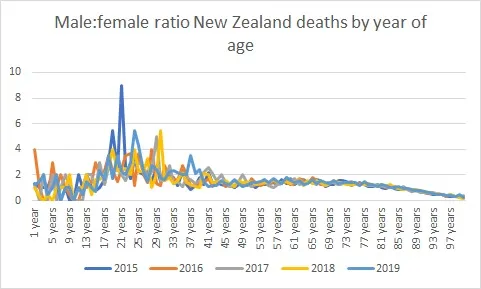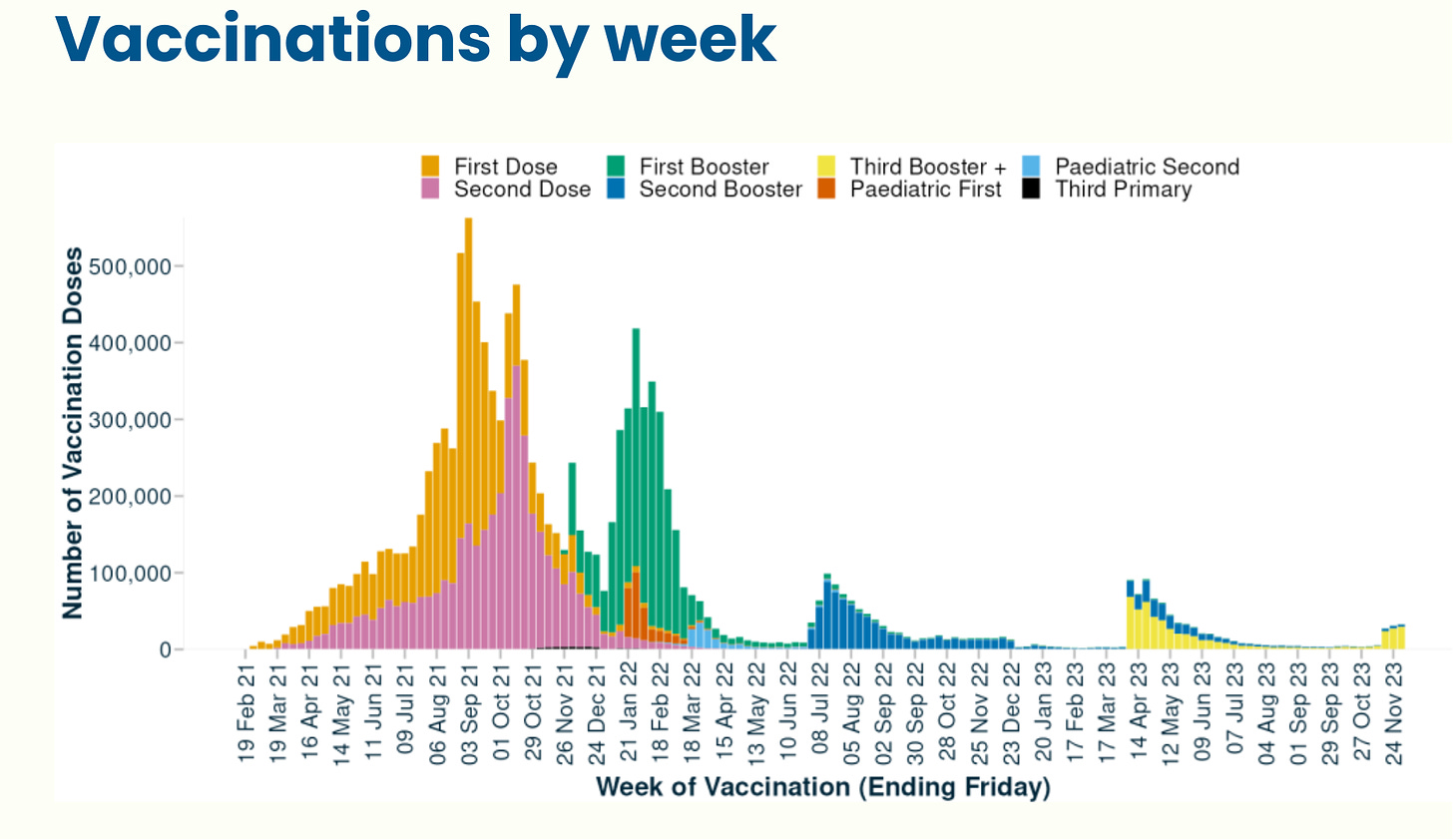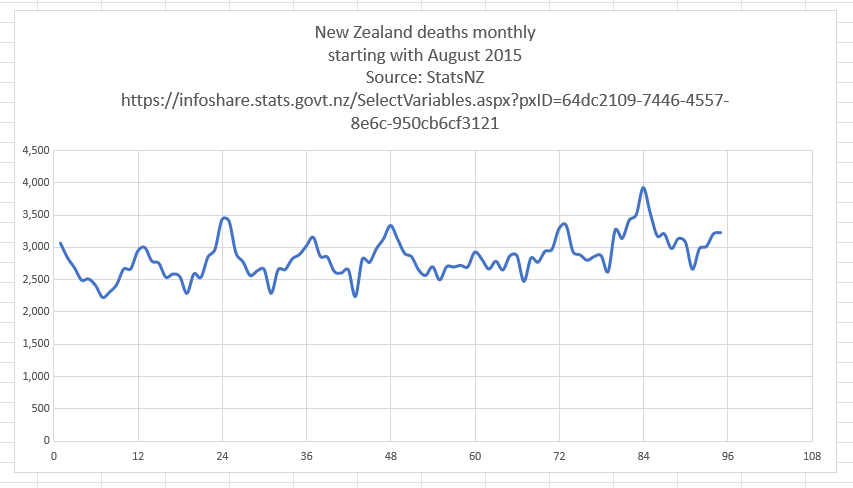by Steve Kirsch, Steve Kirsch’s newsletter:
 We’ve always known that the Pfizer COVID vaccine kills disproportionately more males than females. Thanks to Barry Young, we can now confirm this effect in the NZ data.
We’ve always known that the Pfizer COVID vaccine kills disproportionately more males than females. Thanks to Barry Young, we can now confirm this effect in the NZ data.
Executive summary
TRUTH LIVES on at https://sgtreport.tv/
This post covers two different effects: 1) an effect whereby males die at a higher rate than females for early doses and 2) an effect whereby people die at an accelerated rate after getting the COVID vaccine. The first effect is relatively small compared to the second effect.
Effect #1: A gender analysis of the New Zealand data shows an alarmingly higher rate of mortality of males within 120 days after the first two shots compared to after 120 days in the same cohort. The effect diminishes after the 3rd shot and is gone by the time the 4th shot comes around. The difference is statistically significant. If the vaccine is safe, the mortality after a shot should NOT be dependent on the dose number!
Effect #2: I’ll show you that when deaths are DECLINING in New Zealand, if you got one of those COVID shots, your death rate INCREASES over time. You are basically increasing your chances of dying with additional shots, which is the opposite of what they told you.
Methods for doing gender mortality analysis (Effect #1)
Since gender information wasn’t provided in the data, I used genderize.io to determine the statistical likelihood of each person who died being male or female. I verified that if you took every single death, that the male:female ratio was very close to the overall New Zealand male:female death ratio of 1.05 which affirms the accuracy of the genderize.io data.
The fact that the overall m:f death ratio didn’t move a lot doesn’t mean the vaccine is safe. It just means that the male:female disparity is just affecting younger cohorts and earlier shot numbers so the GENDER disparity effect is relatively small in comparison to other effects. But the fact it is there is just more proof the vaccines are unsafe.
I didn’t have the names of the people who were living and took the shot, so I couldn’t compute the ratio of males to females who received the shot.
So in the analysis below I will only be able to look at longitudinal effects, i.e., the difference in gender-specific mortality over time once they got a particular shot number. The gender ratio is fixed at the time of the dose and does not change over time (modulo the small fraction of people who die).
I chose an age range of 40 to 77 to give me a wide range of ages (so I collect the most information) in a range where the male:female death ratio is very stable in New Zealand.
Statistics used in the results below



Gender results: Males died much faster than females. Earlier shots had the biggest effect.
For dose 1, males were far more likely to die than females in the first 120 days post-shot:

But if you look beyond 120 days, the rate of males:females dying goes from 1.75 to 1.46 which is a stunning drop.

The same effect happens in the first 120 days after Dose 2, but it is slightly smaller:


Now look at what happens to Dose 3 and 4 using the exact same longitudinal observation. Note that these doses are 6 months apart and shot 3 is given when there is a death peak and shot 4 is given when there is a death trough in New Zealand.
For Dose 3, the ratio drops from 1.36 to 1.31. So the effect is there, but it is smaller on these shots.


With Dose 4, we see that the gender effect is now gone. This shot is given 6 months after Dose 3 when background deaths are at a trough. So irrespective of background conditions, we see a diminishing gender effect… it’s now gone.
Read More @ kirschsubstack.com



